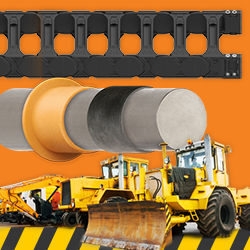Fluence Updates SPYDR LED Lighting Solutions to Create More Efficient Vertically Grown Cannabis
SPYDR Series solutions have been redesigned for streamlined deployment and to provide greater lighting efficacy which increase plant yield, quality and uniformity while minimizing demands on arable land
Fluence Bioengineering Inc. today announced three new horticulture LED lighting solutions redesigned to enable the worlds most efficient and productive vertical controlled environments. With an updated and slimmer form factor streamlined for quick and easy deployment, the new Fluence SPYDR Series represents high-intensity lighting solutions for the vegetative and flowering stages of cannabis crops.
"The new SPYDR Series has been redesigned for quick and easy deployment in commercial environments," said Randy Johnson, chief technical officer, Fluence Bioengineering. "By optimizing the profile for vertical growing applications, the second-generation SPYDR Series minimizes the total systems footprint enabling cultivators to deploy in any commercial-scale environment."
The new SPYDR Series effectively converts energy into photosynthetic photon flux (PPF), reaching new levels of lighting efficacy of up to 2.7 micromoles/Joule (µmols/J). Designed to induce the ideal photobiologic response in plants via broad-spectrum lighting, each new solution encourages consistent, high-quality plant growth. The reengineered ultra-low profile (1.4 inches thin) delivers high-levels of PPF to increase space utilization and efficiency for vertical growing applications. Purpose-built for controlled environments, each LED lighting system is foldable and easily positioned to deliver uniform levels of photosynthetic photon flux density to each plant and produce higher crop yields per square foot of plant canopy.
The new SPYDR Series includes three lighting systems: the SPYDR 2x, SPYDR 2p and SPYDR 2i. The new SPYDR Series is ideal for vertically grown cannabis, which require high-intensity lighting.
Key features of each SPYDR LED lighting solution include:
SPYDR 2x - Successor to SPYDRx, for vegetation and early bloom growth stages of cannabis, SPYDR 2x offers PPF of up to 875 µmols-per-second, with a lighting efficacy of 2.6 µmols/J.
SPYDR 2p - Well-suited for the bloom growth stage of cannabis, the flagship SPYDR 2p replaces the first-generation SPYDRx PLUS and offers up to 1580 µmols/s at 2.5 µmols/J.
SPYDR 2i - A limit pushing LED solution for cultivators which wish to stretch cultivation best practices with the highest levels of light intensity and efficacy, hitting a peak of 1700 µmols/s at 2.7 µmols/J.
The entire SPYDR Series is certified with the ETL Mark and IP66 Rating to withstand watering and nutrient dispersal in the harshest cultivation environments.
Every SPYDR LED lighting solution is designed and built in Austin, Texas, with an anodized and extruded aluminum alloy chassis with an integrated passive heatsink to manage thermal heat, with no moving parts.
The new SPYDR Series will begin shipping in mid-September 2018.
To track availability for the new SPYDR series or view product imagery, visit http://fluence.science/spydr.
About Fluence Bioengineering
Fluence Bioengineering Inc., a wholly-owned subsidiary of OSRAM, creates the most powerful and energy-efficient LED lighting solutions for commercial crop production and research applications. Fluence is the leading LED lighting supplier in the global cannabis market and is committed to solving the looming food crisis by enabling more efficient crop production with the worlds top vertical farming and greenhouse produce growers. All Fluence lighting solutions are designed and built at the companys headquarters in Austin, Texas, U.S.A., with European sales and support based in Amsterdam, Netherlands. https://fluence.science
Featured Product

